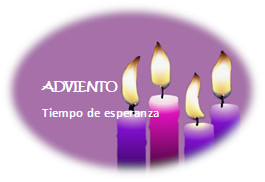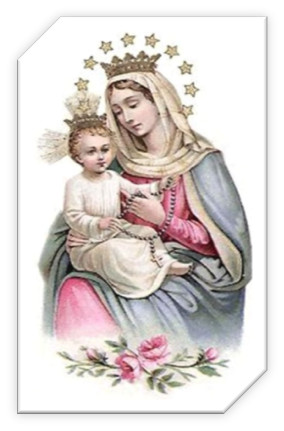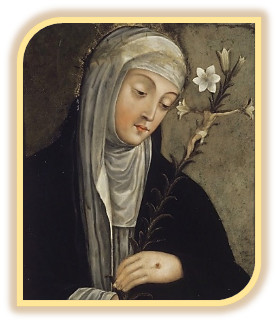 Dear Sisters,
Dear Sisters,
Once again, the Lord has given us the opportunity to celebrate the feast of Our Father Saint Dominic. This year in the context of the eighth centenary of his “dies natalis” under the theme “At the table with St. Dominic of Guzman”. The motto is derived from the painting called “Mascarella”; the oldest painting of St. Dominic which reflects one of the fundamental pillars of the Dominican charism “The Community Life”; a table around which his children sit as a family, in communion within the community.
For St. Dominic, community life constitutes a value and a fundamental pillar. In choosing the Rule for the Order, he chose that of Saint Augustine, which begins by reminding the religious that “they live in the same house to form a single family having one heart and one soul in God”. Community life is the fertile soil where the mission- preaching, gains strength. For this reason, he asked the novices two things before accepting them into the Order: obedience and commitment to community life.
Wanting to imitate the Apostles throughout his life, Dominic had as a model for the community of his brothers the first apostolic community. In this community the first Christians “devoted themselves to the apostles’ teaching, to fellowship, to the breaking of bread and prayers. All believers lived together and had everything in common. Praising God and enjoying the good favor of the people”.
Dominic lived community life in its fullness. He participated in all the activities and submitted to the community in everything. “He thoroughly observed the Rule – according to the witnesses in the canonization process – and does not easily dispense himself from it. He followed the community in the choir, the dining room for the meals and in all places” according to the schedules; he adapted himself to the community in everything, and although he often spent the nights praying in the church, he is present in the chapel with his brothers for the morning prayer “. However, community life is not only about being present in the regular observances; because one can be physically present but emotionally far away; the gestures and details of his closeness and tenderness towards the nuns and brothers are recognized by everyone. Saint Dominic taught us that life in common requires charity towards each sister, presence and active participation in the activities of the community, rejoice with those who are rejoicing, sympathy with those who are sad, listen to each person and accept everyone.
It also means putting everything in common; not only the material things or the fruit of one’s own work, but also the values, gifts and qualities that each sister has; sharing their ideas, helping each other and placing the common good first before individual interest. I believe that the reason why Dominic was exemplary in community living was because of his humanity, he was fully human, fully alive.
Dominic’s humanity is characterized by contrasts: strong but tender, decisive but open, firm but compassionate.
Dominic had to overcome many obstacles, many adversities in life, however nothing of harshness, rigidity or intolerance is ever seen in his character. According to the memory of witnesses who lived with him, Dominic stood out especially for his tenderness, sensitivity and compassion- virtues that humanize.
He lived and fully exemplified what Pope Francis affirms “only tenderness can change people”.
Dominic´s heart broke; he is deeply moved by the sufferings and needs of others. He went out and put himself in place of the other, he sympathized with their pain and joy. He was warm and treated everybody humanely. These are just some of his traits, his true humanity. It was not sufficient for him to feel sorry, he did something and responded to injustices and to the needs of others. We know very well the many episodes in his life in which he tried to remedy the suffering of somebody to the extent of giving his own life.
The Master of the Order, Fr. Gerard, challenged us in one of his letters about the jubilee: What does it mean for us to be at table with Saint Dominic in the here and now?
We have to ask this question specially at this time when the fear of being contaminated from Covid 19 virus overwhelms and threatens us and use it as an excuse to “keep our distance”.
I think that to sit down at the table of St. Dominic today implies that we intentionally become attentive to the needs of the sisters specially the weak, those who are most in need, those who are apparently self-sufficient; to listen patiently to each one, listen to their fears, their concerns, their anxieties and encourage that each sister can freely express her concerns and be comforted with respect and kindness. Not all have the same sensitivity and the ability to face the “fears” of life. As the saying goes: “those who are strong have to bear the infirmities of the weak”.
To sit at the table of Dominic in our present time commits us to dare to talk to each other, in all honesty and truthfulness say what we care about our community, what troubles us, what we like, as well as the concerns of our fellowmen. For this we have to support as well as sustain each other and seriously discern the urgent needs of our present society.
A community does not advance humanly or spiritually if it is not nourished, expressed and manifested with gestures, attitudes and words. Only if we express our humanity and tenderness, as did our Father, can we witness the greatness of the love and fellowship and respond to the cries of injustice and needs of humanity. Dominic was well aware of the reality of his time, he got involved and committed himself to making a better world.
Let us learn from Dominic how to pay attention to the sisters whom we live with; to accept and welcome their weaknesses and vulnerabilities, just as he accepted that of the friars with whom he lived. Let us avoid closing in on ourselves but let us open, as he did, our eyes, ears and arms to the cry of those who are in need.
I think Dominic would be delighted to live in communities today where there is genuine concern, love and support for each other; where each one strives to discern the signs of the times making this civilization a little more pleasant to live in.
HAPPY FEASTDAY OF ST. DOMINIC. May this jubilee year serve to renew ourselves by following the teachings and examples of our Father.
With fraternal embrace and my prayers,
Sor Mª Asunción González, O.P.
General Prioress
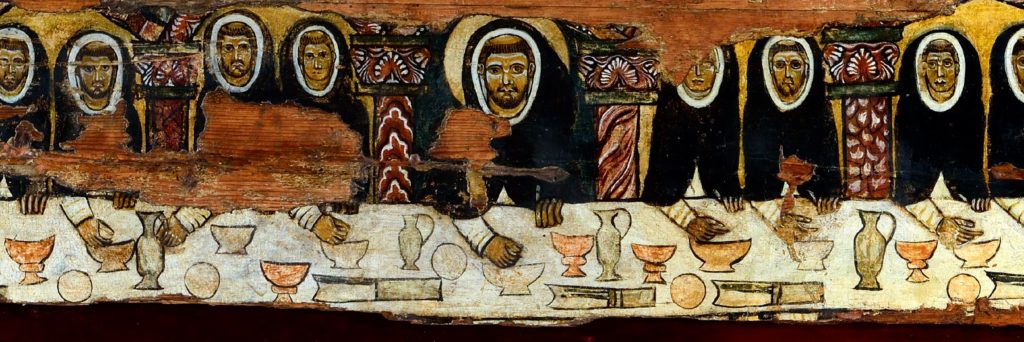
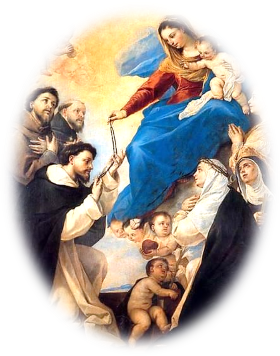
 Our Lady of the Holy Rosary 2022
Our Lady of the Holy Rosary 2022


